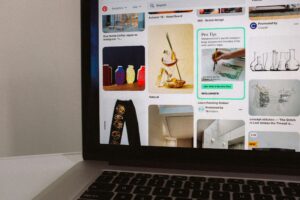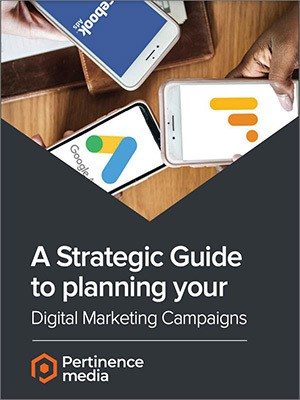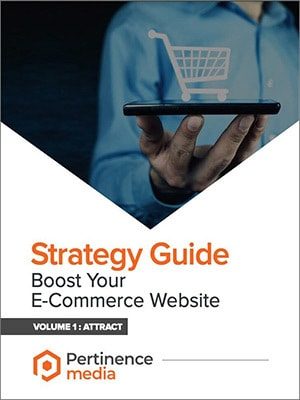The Google Ads network
To attract your target audience to your e-commerce site, digital advertising is a tool that can offer a good return on investment. The Google Ads network allows you to implement several complementary strategies, such as displaying your text ads where your organic search results are not driving sufficient traffic, displaying your image ads on sites most visited by your prospective customers, offering content to your target audience when they are watching YouTube videos, or promoting your inventory online through the Merchant Center.
Google Ads allow you to create different types of campaigns to meet your e-commerce objectives. Their ultimate goal is to put you in touch with your potential customers in the most relevant format and at the most opportune time.
There are 5 main types of campaigns:
- Search campaign: Text ads appear where SEO falls short. These ads meet the user’s immediate need for search results and are displayed alongside organic results. It is also possible to display your ads on partner sites of the Google network to increase your ads’ visibility.
- Display campaign: Image ads are displayed on Google partner sites. You can choose the specific placements for your ads, or choose to appear on sites where your customers spend time. This type of campaign is recommended to build brand awareness, with audiences at different stages in their purchasing intent.
- Shopping campaign: Your ads appear in Google Shopping, next to the search results. They allow you to promote items in a product catalog through the Merchant Center and increase qualified traffic to your e-commerce site.
- Video campaign: Promotional videos appear either before or after videos posted on YouTube and on partner websites, with a thumbnail encouraging users to discover your video content. This type of advertising offers a broad reach and helps build brand awareness at a lower cost.
- App campaign: These ads run on popular platforms like Google Play, YouTube, and partner sites. They help increase engagement and conversion (downloading the app or in-app events).
Each campaign corresponds to very specific business objectives and can be complementary. For your campaigns to be effective, they must follow several key practices. Here are some best practices to ensure the success of your e-commerce campaign.
Best practices for Google Ads Search
- Find a balance between keywords with a high cost per click (i.e., highly searched words) and other more accessible keywords with a low or no search volume.
- List negative keywords to exclude your ads from showing up to avoid positioning yourself in ineffective searches or with users who would not be interested in your offers.
- Make sure that the displayed URL is directly related to your campaign.
- Track your conversions and optimize your campaign.
- Do not use more than 10 keywords per ad group. Selecting the right keyword themes determines your campaign’s performance. Each theme redirects to a different section of your website.
- Responsive ads allow you to offer multiple variations of titles and descriptions to determine which perform the best.
- Use a keyword tool to create your list, such as Keyword Planner.
- Mix broad match and exact match types to appear on searches with unknown keywords.
- Don’t underestimate the importance of remarketing, even in your text campaigns.
- Activate several ads per ad group for relevant A/B testing.
- Don’t launch your campaigns with too many demographic criteria, especially if you are just starting out. Your customers may not be where you think they are.
- Your conversion rate is a very good indicator: it allows you to assess your campaign’s performance, audience, ad groups, etc.
Best practices for Google Ads Display
- Work on targeting similar affinity audiences, compare them by performing tests (around 2 weeks) and retain the best performing audiences.
- Responsive ads allow you to find the winning combination of images, titles and descriptions that perform best to maximize your conversion rate and benefit from the best distribution. They correspond to all available inventory formats.
- Automatic bid management can be useful if your time is limited. You set your daily budget at the start and can change it at any time.
Best practices for Google Shopping
- Before your ad campaign, think carefully about your product names and descriptions because they will determine search results and the appearance of your ads. Remember that characters are limited: be concise and to the point.
- Put effort in the images showcasing each product on your site (weight, format, quality).
- Activate dynamic remarketing so that users who do not complete their purchases are retargeted with previously viewed products.
- Depending on the length of your average sales cycle, adapt your audience’s lifecycle in your remarketing campaign so that you don’t retarget people who are no longer interested in your products.
Targeting your ads
Once your ads are created, you need to determine the targeting strategy you will implement, which is essential to your campaign’s success. It will allow you to reach the right people at the right time, and drive qualified traffic to your online business. There are many types of targeting, in 3 main categories: targeting by audience (interests, ages…), location, or device.
Audience targeting
- Demographics: users’ age, gender or known income
- Affinity: according to their interests
- In-market: users who are looking for a product
- Intent: by selecting words associated with users most likely to purchase from your site
- Custom intent: by selecting words and URLs associated with users most likely to purchase from your site
- Similar audiences: users who resemble your existing audiences
Placement targeting
- Placement: Target the most relevant Google Display Network websites from those you have chosen in your “Managed Placements”
- Content keywords: Select keywords related to your products or services to target users searching for those same terms.
Device targeting
- Computers: users whose screen resolution is greater than 7 inches in diagonal
- Mobile: users with smartphones
- Tablet: users with mobile devices that don’t necessarily include a phone
- TV screens: users with devices streaming TV content such as smart TVs, gaming consoles, or connected devices like Chromecast. This targeting option is only available for Display and Video campaigns.
Understanding your target audience will allow you to know what characteristics to use to find people who may be interested in your online store.
Other players like the Amazon Marketplace
Although Google and Facebook now share the bulk of digital advertising, new players are beginning to take part in the market, such as Amazon. Using Amazon to compare prices has become a common practice among shoppers. Other, smaller players like Best Buy or Rakuten or Kijiji offer interesting opportunities. Determine which platforms to focus your marketing strategies on to significantly increase your income.
To sum up,
Google Ads can help you grow your online business by displaying your text ads where your SEO falls short and by displaying your image ads on sites visited by your target customers. Different types of campaigns are available and several targeting filters allow you to reach the most relevant users for your business.
Campaigns on the Google Network need to be tracked, analyzed and optimized to be effective. From content creation, to targeting the right audience, to defining your budget, an agency can help you with your various e-commerce projects.
Our e-commerce Accelerator is a customized service offering that meets every online business challenge, allowing you to quickly improve your performance. For more information, contact us!






